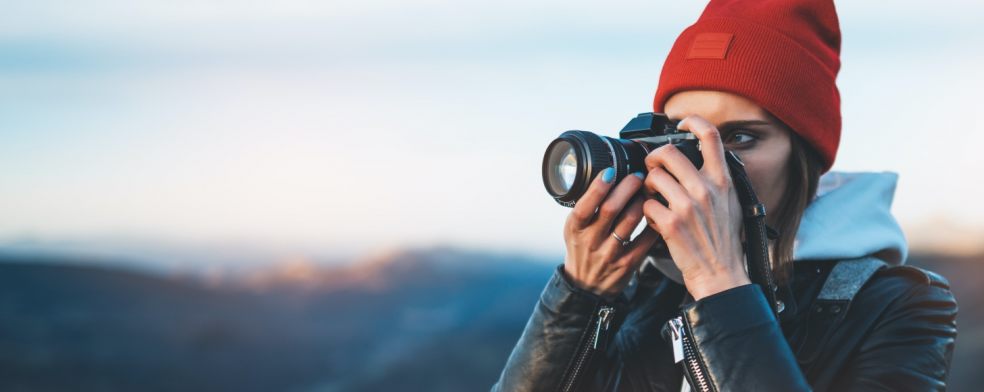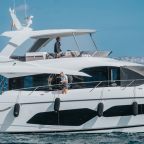
How To Choose The Right Photography Camera For Travel
You’ve scrolled through various catalogues trying to figure out which camera to get to take along on your travels—unable to pick one out of the lot. Or maybe you haven’t started yet, but are aware of the seemingly endless options and want to be more informed before starting your search.
Every camera is different. The dilemma is finding one with the features and qualities you need or want as you capture special moments. There are probably already several cameras that would work well for your travel photography needs. You just need to find them.
This article will give you an overview of everything to consider when camera shopping. By the end, you can easily decide which camera is the right one for you.
The Most Important Factor: What You’ll Use It For
Before you can start choosing a camera, it's helpful to define why you want a camera, what you'll be using it for, and what you need it to do. Some cameras have drastically different features, which often depend on price.
For example, higher-end cameras may have every bit of functionality a professional may want for shooting an event but come with a high price tag. A professional photographer may require a high-end camera if they travel for work. However, someone who travels for leisure and wants to take pictures of places they visit wouldn't necessarily need something like this.
So, think about everything you've planned for your trip and how you expect to be using a camera. You might need something that can withstand being tossed into a backpack while hiking a mountain trail. Perhaps you'd prefer travelling with a more budget-friendly camera. Maybe you want something lightweight and easy to use to quickly snap pictures on a birthday trip you've planned.
Budget
Even ‘cheaper’ cameras are relatively costly. Entry-level cameras generally start at around GBP£500, while more professional cameras cost thousands. How much you spend on a travel camera is up to you. In many cases, an entry-level camera may be well-rounded and fulfil all the photography needs of an everyday shooter on a trip. But you could still invest in something more well-rounded if you want.
That said, you can find great deals on second-hand cameras that are still fully functional and take great pictures—you can try looking at Cameraworld if you’re in the UK. The primary benefits of buying a used camera are that you can still produce great quality pictures while saving money. Additionally, you lose a smaller investment if it gets damaged or lost on your trip.
Portability
It’s probably safe to assume that most tourists prefer a small, lightweight camera over a large, heavy one. These days camera size isn’t much of an indication of picture quality.
For travel, you’ll probably be happier with a smaller camera. They’re easier to carry, hanging around your neck from a strap or in a bag. You’re also more likely to use it and take more pictures, unlike larger cameras which are more hassle to get out and use, which may lead to leaving it inside your bag or hotel room most of the trip.
Mirrorless cameras are generally more compact than DSLRs (digital single-lens reflex cameras), providing good photos equally. Point-and-shoot or bridge cameras can be even smaller, but these require you to compromise on some settings you might want. Still, they can take great pictures and simplify the experience for someone who isn’t interested in the more intricate details behind photography.
The Lens, Aperture, Settings, And Zooming
These features depend entirely on how you would like to shoot. If you’re into photography and want more control over your shot, you may favour a camera with interchangeable lenses and complete manual control over the settings.
Aperture essentially refers to a measure of how much light the lens allows through. It’s sometimes referred to as ‘f-stop’ and is measured as ‘f/some-number,’ like f/1.8. The higher the number, the less light and the more depth of field. The lower the number, the more light and shallower the depth of field. If you expect to be shooting in low-light conditions, try to get a lens with a lower number for the aperture.
Zooming is a feature you probably want when travelling unless you intend to carry multiple lenses. There are two categories of lenses: prime and zoom lenses. Prime lenses are at a fixed focal length, while zoom lenses give you an adjustable focal length. Because they’re more versatile, most people can comfortably get through a trip with a single zoom lens.
Conclusion
Start by looking at affordable mirrorless and DSLR cameras to give yourself a starting point for comparison--this is where you’re likely to stay if you enjoy having a versatile camera with interchangeable lenses and various settings. If you decide that you want something smaller, cheaper, or don’t need all those fancy features, start looking at point-and-shoots.
Of course, you may go through this entire list and make all the comparisons. Only to decide your smartphone is all the camera you need—most of them can take good pictures too. You might even go in the opposite direction and choose to get an old film camera which is readily available on the second-hand market, cheap, and fun.
In general, you should try travelling with a relatively compact camera with the basic features you want. Finding the right camera to take on a trip mainly comes down to your personal preference and what you intend to use it for.

















